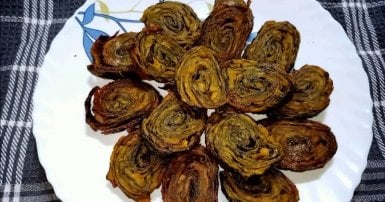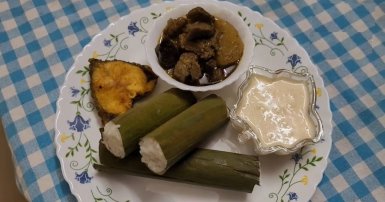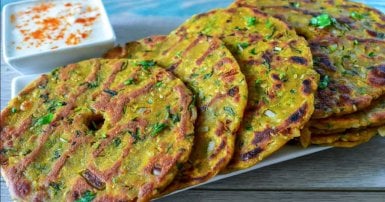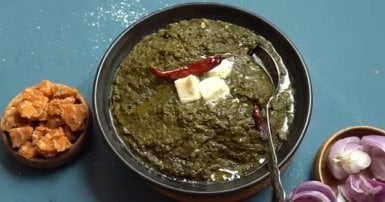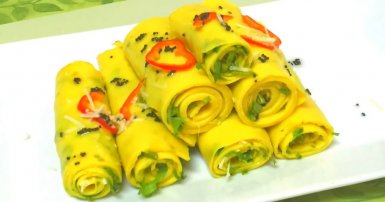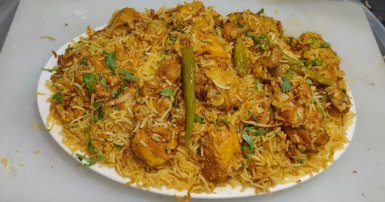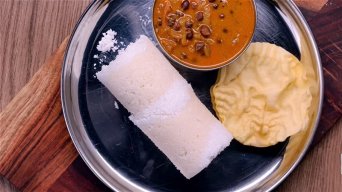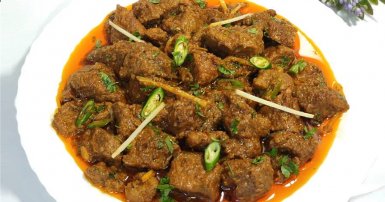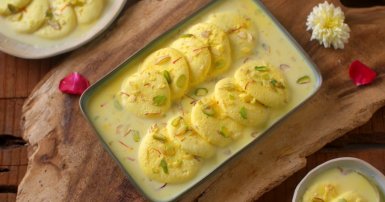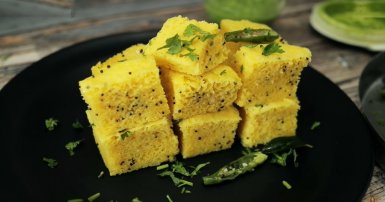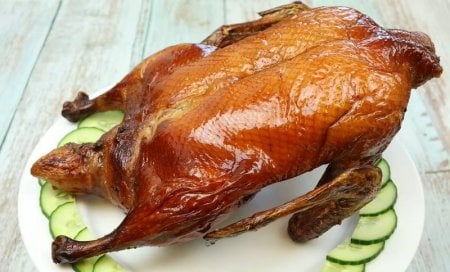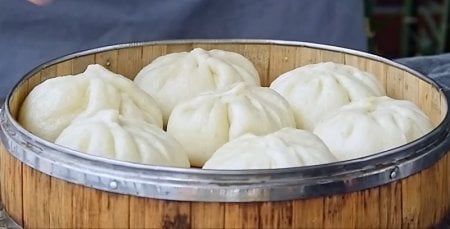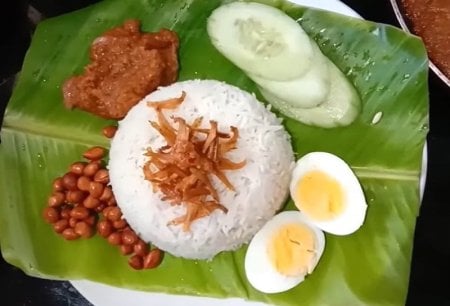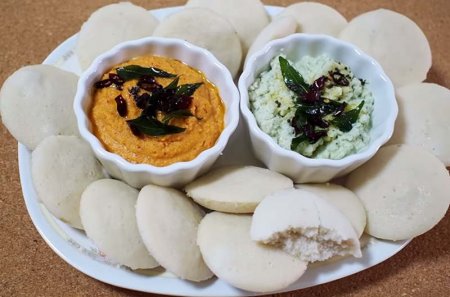Indian curries are a vibrant mosaic of rich and diverse flavors, showcasing the vibrant palette of Indian cuisine. These aromatic dishes, like Butter Chicken and Rogan Josh, are a delightful fusion of spices, herbs, and ingredients. Offering both vegetarian and meat-based options, they provide a sensorial journey through the diverse regional culinary traditions of India. Served with a variety of bread or rice, Indian curries are a cornerstone of the country's culinary identity, appealing to those who savor a symphony of tastes and textures. These iconic dishes go beyond mere meals, embodying the cultural richness and intricate artistry of Indian culinary traditions.
Chicken Tikka Masala
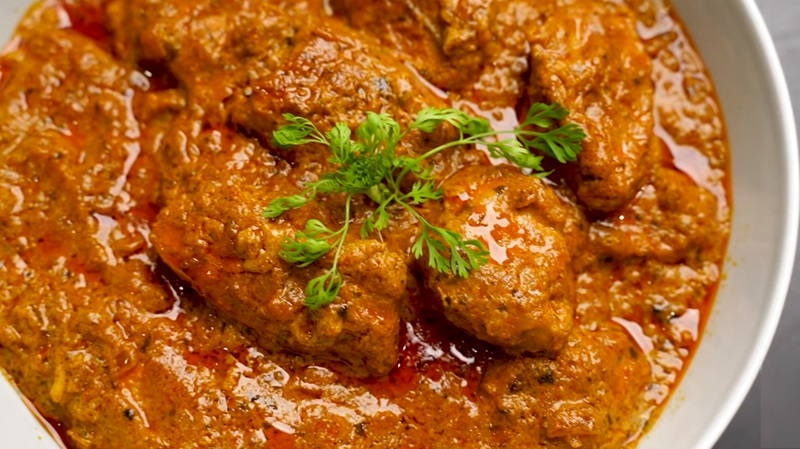
Chicken Tikka Masala, celebrated for its cross-cultural appeal, has achieved worldwide acclaim as a culinary delight. Born from the creative fusion of Indian and British cuisines, this delectable masterpiece consists of succulent, roasted marinated chicken chunks, known as chicken tikka, bathed in a spiced sauce that is both creamy and vibrantly orange.
The genesis of Chicken Tikka Masala can be traced to Indian cooks in Great Britain who popularized this dish, turning it into a ubiquitous presence on menus worldwide. The preparation involves marinating boneless chicken chunks in a tantalizing blend of spices and yogurt, which are then roasted to perfection in an oven. The creamy sauce, a hallmark of this dish, typically features a delightful combination of tomatoes, coriander, cream, coconut cream, and a masala spice mix.
While a tomato and coriander-based sauce is common, the beauty of Chicken Tikka Masala lies in its adaptability. With no standardized recipe, variations abound, showcasing the diversity of flavors in different renditions. A survey of 48 recipes revealed that the sole constant ingredient was, unsurprisingly, chicken. The sauce's orange hue is achieved through the inclusion of ingredients such as paprika, tomato purée, turmeric, or even food dye, adding visual allure to the gastronomic delight that is Chicken Tikka Masala.
Korma
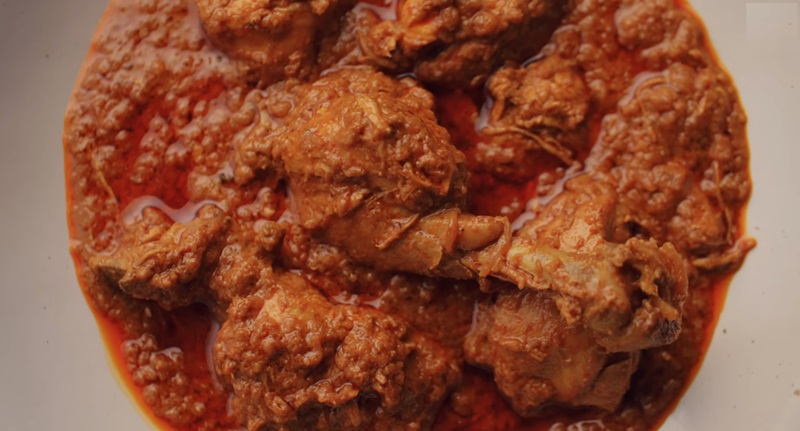
A korma is defined as a culinary marvel where meat or vegetables undergo a slow braise with yogurt or stock. This technique manifests in various korma styles. The flavor profile is intricately woven with spices like ground coriander and cumin, artfully combined with yogurt, added gradually to prevent curdling. Traditionally, this meticulous process unfolded in a pot over a gentle flame, often using charcoal on the lid for uniform heat distribution. Korma, whether delicately spiced or robustly fiery, embraces diverse meat options such as lamb, goat, chicken, beef, or game, with some variations incorporating a medley of vegetables like spinach and turnip. The term "shahi," associated with certain kormas, denotes its prestigious status, symbolizing an epicurean delight reserved for special occasions and courtly indulgences.
Whether enjoyed with fragrant basmati rice or accompanied by naan bread, Chicken Korma invites diners to savor the symphony of flavors that dance harmoniously in this time-honored dish, making it a timeless ambassador of Indian culinary heritage.
Saag
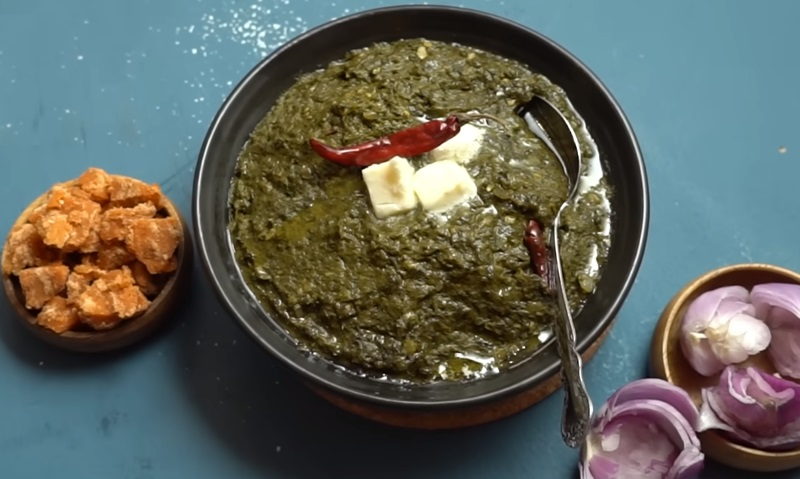
Saag, also spelled sag or saga, is a leafy vegetable. Frequently relished with bread options like roti or naan, and in specific regions, complemented with rice, this dish is a delightful fusion of diverse greens like spinach, basella, finely chopped broccoli, mustard greens, collard greens, and an array of other flavorful ingredients. The greens are skillfully combined with a medley of spices and occasionally enriched with ingredients like chhena.
This gastronomic delight has gained significant popularity in India, particularly in the state of Odisha, where it is traditionally served with pakhala. At the esteemed Shree Jagannath Temple in Puri, saag holds a special place as one of the offerings to Jagannath as part of Mahaprasad. Additionally, saag is widely appreciated in West Bengal and other North Indian regions, with sarson ka saag or mustard plant leaves being a prevalent preparation. It is commonly enjoyed with makki ki roti, a maize flour-based yellow flatbread. A culinary essential in the North Indian state of Punjab is the cherished dish known as saag gosht or hariyali maans, which showcases a harmonious combination of spinach and mutton.
Some variations of saag may also include the addition of paneer (Indian cottage cheese) or chicken for added protein. Saag is not only delicious but also packed with nutrients, making it a popular choice among vegetarians and vegans.
Dal Makhani
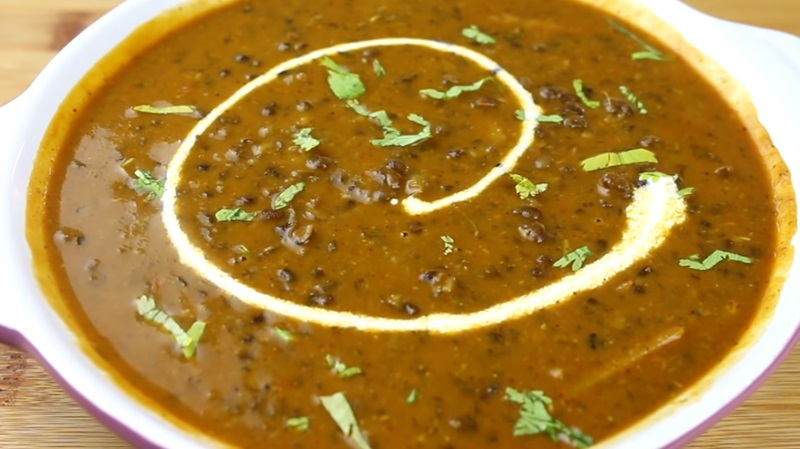
Dal Makhani, a beloved dish in Indian cuisine, has a rich history and an origin deeply rooted in the heart of Punjab. This sumptuous lentil curry has evolved over time, becoming a staple in households and a cherished item on restaurant menus.
The history of Dal Makhani dates back to the rural kitchens of Punjab, where it was traditionally prepared by simmering whole black lentils and kidney beans overnight on low heat. This slow-cooking method allowed the lentils to absorb the flavors of various spices and aromatic herbs, resulting in a creamy and flavorful dish. Over the years, Dal Makhani gained popularity and migrated from rural kitchens to urban restaurants, becoming a symbol of Punjabi cuisine.
The preparation of Dal Makhani involves a careful selection of ingredients and a meticulous cooking process. Whole black lentils (urad dal) and kidney beans (rajma) are soaked overnight and then simmered with tomatoes, ginger, garlic, and a medley of spices. The addition of butter and cream gives the dish its rich and creamy texture, elevating it to a luxurious culinary experience. The slow-cooking method remains essential to achieve the dish's signature taste, allowing the lentils to meld with the spices and absorb the indulgent flavors.
Dal Makhani has transcended regional boundaries and gained international acclaim, captivating the taste buds of people around the globe. Whether enjoyed with naan, roti, or rice, this iconic dish continues to be a symbol of comfort, tradition, and the rich tapestry of Indian culinary heritage.
Chicken Curry
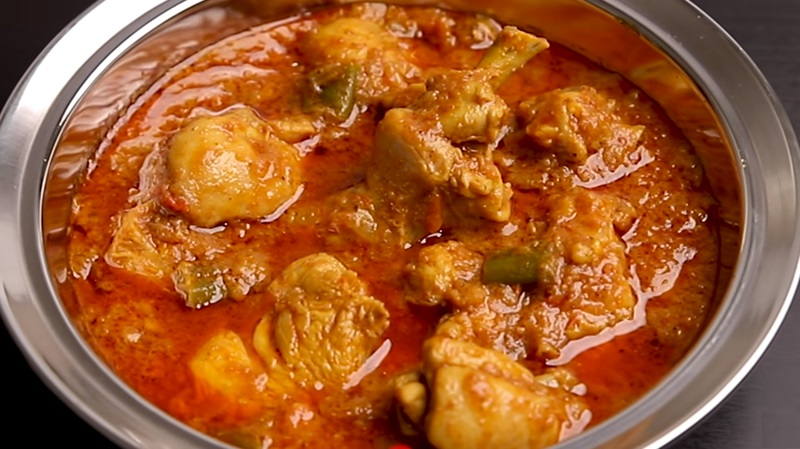
Chicken curry is a flavorful and aromatic dish that is loved by people all over the world. It is a staple in Indian cuisine and is known for its rich and complex flavors. While its roots are traced back to the Indian subcontinent, the dish has undergone numerous adaptations, evolving into unique regional variations. The preparation of Chicken Curry involves marinating chicken pieces in a harmonious mixture of spices such as cumin, coriander, turmeric, and chili powder. The meat is then simmered in a fragrant sauce made with tomatoes, onions, garlic, and ginger. Coconut milk, yogurt, or various regional ingredients are often added, contributing to the dish's distinctive taste.
Over time, Chicken Curry has become a global favorite, with each culture adding its unique twist to the recipe. Whether it's the fiery vindaloo in Goa, the coconut-infused curries of Southeast Asia, or the aromatic blends of spices in the Caribbean, Chicken Curry stands as a testament to the dynamic nature of culinary fusion and the universality of savoring a delicious and comforting meal.
Paya
-1705470194.jpg)
Paya, a traditional Indian curry, is renowned for its opulent and flavorful profile. This dish features lamb or goat trotters slow-cooked in a fragrant blend of spices and herbs. The highlight is the tender and gelatinous meat from the trotters, meticulously cooked to perfection to allow a deep infusion of flavors.
The curry base incorporates a harmonious mix of onions, tomatoes, garlic, ginger, and an array of aromatic spices like cinnamon, cloves, cardamom, and bay leaves. The leisurely cooking process ensures the meat attains an exquisite tenderness, while the amalgamation of spices and herbs creates a luscious and indulgent curry. Garnished with fresh coriander leaves, Paya is typically served alongside naan bread or rice.
Beyond its delicious taste, Paya is esteemed for its health benefits. The trotters are naturally rich in collagen, believed to offer numerous advantages for joint health and digestion. Altogether, Paya stands as a beloved Indian curry dish, epitomizing the subcontinent's culinary richness and heritage.
Palak Paneer
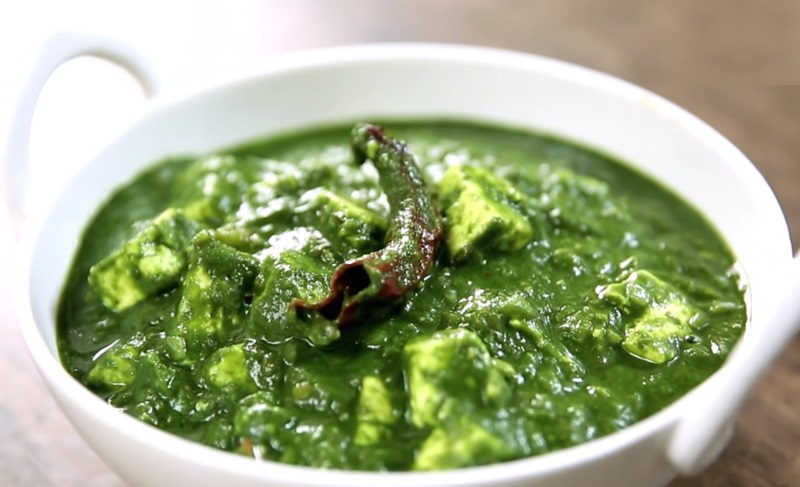
Palak paneer, also referred to as Palak Chhena, is a delightful Indian dish where chhena or paneer is immersed in a delectable paste crafted from pureed spinach, known as palak (spinach). Beyond being a vegetarian powerhouse of nutrition, this dish presents a symphony of lively flavors and enticing aromas.
In English-speaking establishments, the terms palak chhena and saag chhena are occasionally used interchangeably. However, saag chhena distinguishes itself from the traditional palak chhena by incorporating additional green leafy vegetables like mustard greens, while palak paneer exclusively highlights the use of spinach.
Palak Paneer involved the meticulous process of boiling and pureeing spinach. This puree is then combined with sautéed onions and tomatoes, and grilled paneer cubes are added to create a velvety curry seasoned with tomatoes, garam masala, ginger, garlic, turmeric, cumin, and chili powder. The result is a harmonious fusion of earthy spinach, creamy paneer, and aromatic spices. Palak paneer is served hot with accompaniments such as parathas, roti, naan, makki ki roti, or boiled/steamed rice. Spinach provides essential vitamins and minerals, while paneer contributes a protein-rich element. This timeless Indian curry enjoys universal acclaim for its rich flavor profile and wholesome ingredients, making it a favorite among both vegetarians and non-vegetarians alike.
Jalfrezi
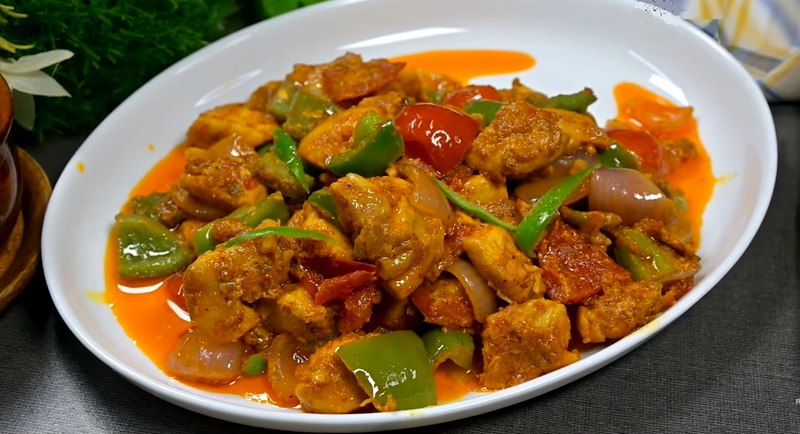
Jalfrezi, a dynamic Indian dish, originated during the British Raj era, evolving from the British love for stir-fried leftovers. The name itself is derived from the Bengali words "jal" meaning spicy and "frezi" meaning fry. This flavorful curry boasts a robust history, blending Indian and British culinary influences.
The preparation of Jalfrezi involves stir-frying marinated pieces of meat, often chicken or lamb, with a vibrant array of colorful vegetables such as bell peppers, onions, and tomatoes. The dish is elevated with a melange of spices like cumin, coriander, turmeric, and chili, creating a bold and aromatic flavor profile. Some variations may include the addition of ginger, garlic, and garam masala for added depth.
Jalfrezi stands out for its spicy and tangy character, showcasing the versatility of Indian cuisine. Often served with rice or Indian bread, it has become a beloved dish globally, embodying the fusion of culinary traditions from both sides of history. With its bold flavors, vibrant colors, and a perfect balance of heat and tang, Jalfrezi is a must-try dish for anyone seeking an authentic and delicious Indian curry experience.
Madras Curry
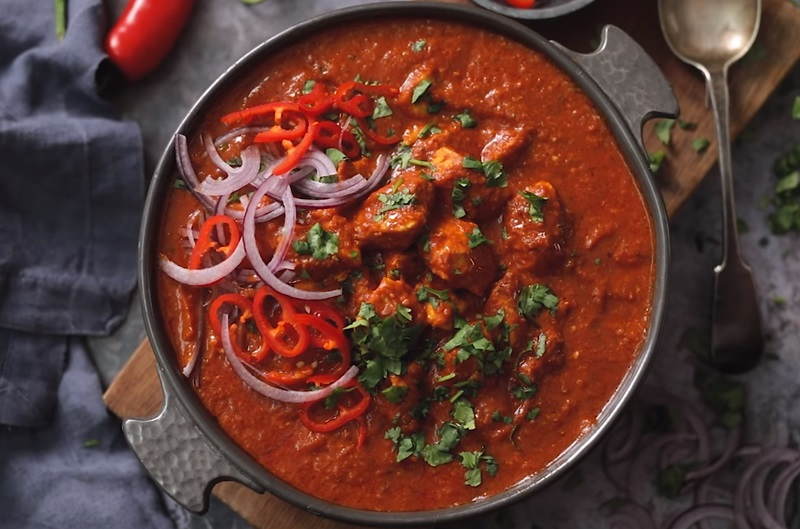
Madras Curry, named after the southern Indian city of Madras (now Chennai), is a flavorful and aromatic dish that reflects the rich culinary heritage of South India. The dish's origins can be traced back to the British colonial era when British traders and settlers in Madras were introduced to the vibrant local flavors. Madras Curry emerged as a fusion of Indian spices and British culinary preferences, creating a unique blend that later gained popularity worldwide.
Preparation involves a harmonious combination of spices such as coriander, cumin, turmeric, mustard seeds, and a distinctive touch of red chilies. The spices are carefully blended and cooked with ingredients like tomatoes, onions, garlic, and ginger, creating a robust and aromatic curry base. Madras Curry features meat, such as chicken or lamb, or vegetables and sometimes includes coconut milk for a creamy texture.
Madras Curry is celebrated for its bold, spicy profile, embodying the characteristic flavors of South Indian cuisine. It is typically served with rice or Indian bread, offering a delightful and satisfying culinary experience. Today, Madras Curry remains a beloved and globally appreciated representation of the diverse and dynamic world of curry.
Dhansak
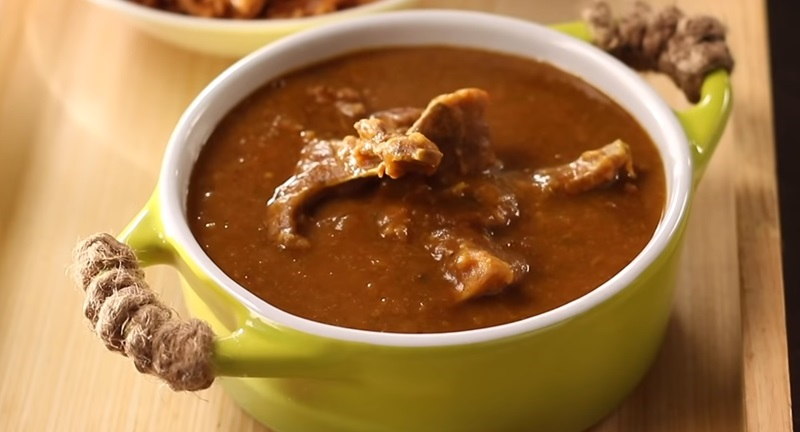
Dhansak, a culinary gem originating from the Parsi community in India, reflects a fascinating blend of Persian and Gujarati influences. The name "Dhansak" is derived from the Persian words "dhan" (meaning grains or lentils) and "sak" (meaning green vegetables). Traditionally associated with celebrations and festivities, Dhansak is a flavorful stew made from a combination of lentils, vegetables, and meat, often lamb or chicken. The Parsi adaptation involves incorporating a unique spice blend known as "dhansak masala," featuring ingredients like cumin, coriander, fenugreek, and cinnamon.
Its preparation involves cooking lentils, meat, and vegetables separately before combining them into a rich, aromatic curry. The dhansak masala infuses the dish with a unique depth of flavor, striking a harmonious balance between sweetness, tanginess, and spice. Dhansak is typically served with caramelized brown rice or traditional Parsi bread.
Beyond its delicious taste, Dhansak holds cultural significance, embodying the culinary amalgamation of Persia and India within the Parsi community. This cherished dish has transcended its cultural origins, finding appreciation among diverse populations for its intricate flavors and historical depth.
Rasam
-1705473002.jpg)
Rasam, a South Indian soup known for its invigorating flavors, holds a revered place in the region's culinary heritage. Its origins can be traced back to ancient times, rooted in Ayurvedic traditions that emphasized the use of herbs and spices for medicinal purposes.
The preparation of Rasam involves a tantalizing blend of tamarind juice, tomatoes, lentils, and a host of aromatic spices such as black pepper, cumin, coriander, and asafoetida. The mixture is simmered to perfection, allowing the spices to infuse the soup with their distinct flavors. Variations abound, with some recipes incorporating ingredients like garlic, curry leaves, or mustard seeds.
Rasam is not only celebrated for its culinary appeal but also for its perceived health benefits. In South Indian households, it is often consumed not just as a soup but also as a side dish with rice. Its tangy, spicy, and herbal notes make Rasam a comforting and refreshing choice, reflecting the vibrant diversity of South Indian cuisine and its close connection to holistic well-being.
Misal Pav
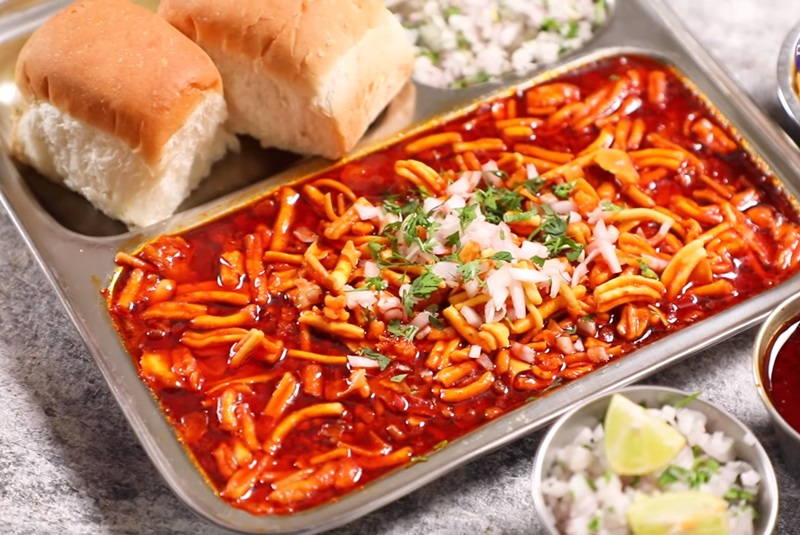
Misal Pav, a flavorsome and spicy street food delicacy, has its roots in the vibrant culinary landscape of Maharashtra, India. The dish consists of misal, a spicy sprouted bean curry, served with pav (bread). The key to its distinctive taste lies in the flavorful mix of sprouted legumes, usually moth beans or mung beans, combined with a rich and aromatic blend of spices, onions, tomatoes, and farsan (crunchy toppings).
To prepare Misal Pav, the sprouted beans are cooked with a spice mix known as misal masala, which typically includes coriander, cumin, cinnamon, and other spices. The curry is then served with pav and garnished with fresh coriander, onions, and lemon, creating a delightful medley of textures and flavors.
Misal Pav has evolved into various regional styles, each with its unique spice levels and additional toppings. It is a perfect combination of textures and tastes, with the sprouted lentils providing a wholesome and nutritious element to the dish. Whether enjoyed as a hearty breakfast or a satisfying snack, this iconic Maharashtrian dish showcases the culinary creativity and zest for flavors that define the state's gastronomic culture.
Pasanda
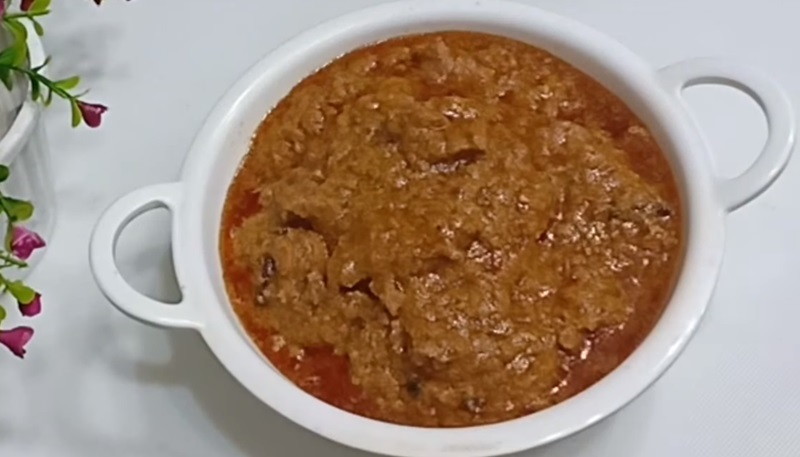
Pasanda, rooted in culinary heritage, began as a culinary marvel featuring strips of flattened leg of lamb or goat. The traditional method involves marinating the meat in a harmonious blend of spices before frying it expertly in a seasoned dish, creating a delightful fusion of flavors that showcases the rich history of this dish.
As it has evolved, Pasanda has adapted to contemporary tastes. While the classic version centers around lamb or goat, the present-day culinary landscape has broadened to include chicken and king prawns without compromising the dish's essence. Regardless of the protein chosen, the timeless process and essential ingredients endure, ensuring a consistent and delightful Pasanda experience.
At the heart of Pasanda is its meticulous marination and the expert interplay of spices that elevate the dish to a culinary crescendo. The fusion of flavors in the seasoning, coupled with the tenderizing effect of marination, results in a succulent and aromatic dish that captivates the palate.
Pasanda's journey through time and adaptation underscores its enduring popularity, offering a taste of tradition with the flexibility to accommodate diverse preferences, making it a timeless favorite on the global culinary stage.
Chicken Chettinad

Chicken Chettinad, a culinary masterpiece hailing from the Chettinad region in Tamil Nadu, South India, is celebrated for its bold flavors and aromatic spices. Chicken Chettinad is a reflection of this rich heritage, incorporating a diverse blend of spices like black pepper, fennel seeds, cinnamon, cloves, and star anise. The preparation of Chicken Chettinad involves marinating chicken pieces in a potent mixture of spices like red chillies, kalpasi, fennel seeds, black pepper, coriander seeds, ginger, garlic, and yogurt. The marinated chicken is then slow-cooked in a sauce made with a coconut and poppy seed blend, infusing the dish with a rich and creamy texture. The result is a symphony of flavors, with the spices harmonizing to create a complex and tantalizing taste.
Garnished with coriander leaves, it is served with steamed rice, dosa, or appam, Chicken Chettinad has become a culinary gem celebrated not only in Chettinad but across the globe. Its history is a testament to the cultural diversity and gastronomic excellence found in the vibrant tapestry of South Indian cuisine.
Xacuti
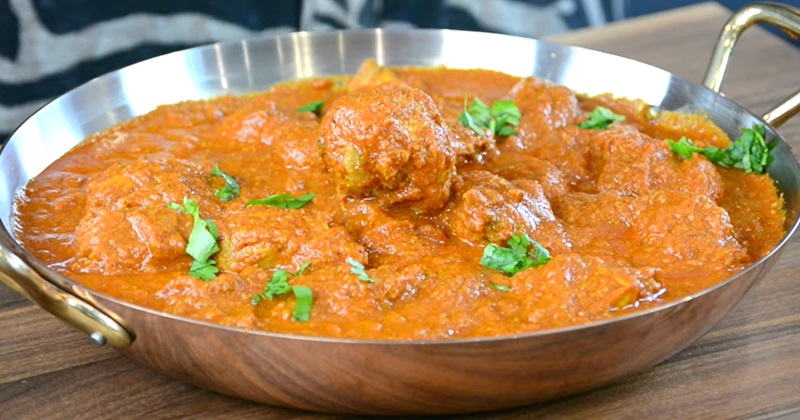
Xacuti, a rich and flavorful curry, has its roots in the sunny state of Goa, India, and is deeply embedded in the region's culinary history. This unique dish, characterized by its complex spice blend, showcases the cultural influences that have shaped Goan cuisine over the centuries. Historically, Xacuti has Portuguese and Konkan influences, with its name derived from the Portuguese word "chacuti." The dish is a reflection of Goa's rich history as a spice trade hub, blending local ingredients with global culinary elements.
The preparation of Xacuti involves a meticulous blend of aromatic spices such as poppy seeds, white poppy seeds, dried red chilies, coriander seeds, cumin, and fennel seeds. These spices are ground to create a flavorful masala paste. Chicken, lamb, or fish is then slow-cooked in this spice-infused paste along with coconut, onions, and tamarind, resulting in a velvety and aromatic curry.
Xacuti is a gastronomic delight, appreciated for its intricate flavors and the perfect balance between heat and richness. Often served with rice or traditional Goan bread, it remains a beloved representation of the cultural amalgamation that defines Goa's vibrant culinary landscape.
Laal Maans
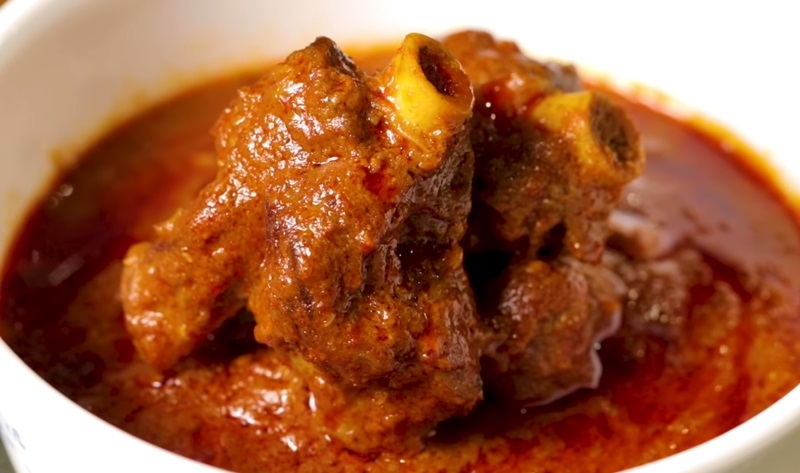
Laal Maans, a robust and fiery curry, traces its roots to the princely state of Rajasthan, India, and is deeply entwined with the region's regal culinary heritage. Translating to "Red Meat" in English, this dish has historical ties to the royal Rajput kitchens. The dish's vibrant red color is derived from the prominent use of Mathania red chilies, an integral part of Rajasthani cuisine.
The preparation of Laal Maans involves marinating mutton in a blend of yogurt, spices, and the fiery Mathania chilies. The meat is then slow-cooked to perfection, allowing the spices to infuse and the flavors to intensify. The use of locally available ingredients such as clarified butter (ghee), garlic, and traditional spices like coriander, cumin, and cardamom contribute to the dish's rich and aromatic profile. The key ingredient that gives this dish its fiery red color is the use of a generous amount of red chili powder.
Laal maans is a favorite among meat lovers and is often enjoyed during special occasions or festive gatherings in Rajasthan. Its bold flavors and distinctive red color make it a true delight for anyone seeking a taste of authentic Indian cuisine. It is a testament to Rajasthan's royal culinary legacy, celebrating the state's cultural nuances and the exquisite flavors that have endured through generations. Often accompanied by bajra roti or steamed rice, this regal dish remains a symbol of Rajasthani culinary prowess.
Goat Curry
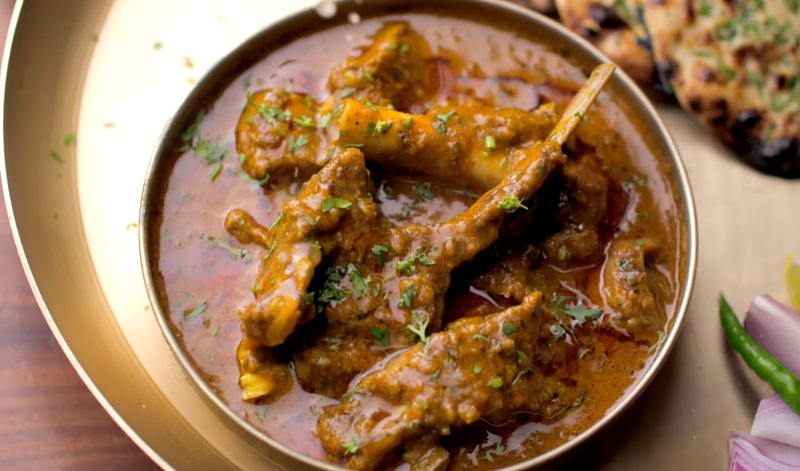
Goat curry is a popular and flavorful dish in Indian cuisine. Made with tender pieces of goat meat, this curry is a rich and aromatic combination of spices and herbs. The meat is marinated with a blend of yogurt, ginger, garlic, and various spices like turmeric, cumin, coriander, and red chili powder. In a traditional Indian curry, onions, tomatoes, and a combination of spices are cooked together to create a thick and fragrant gravy. The marinated goat meat is then added to the gravy and slow-cooked until it becomes tender and succulent. The dish is typically garnished with fresh coriander leaves and served with steamed rice or Indian breads like naan or roti.
Goat curry is known for its bold and robust flavors, combining the earthy taste of the meat with the aromatic spices. It is a dish that showcases the culinary diversity of India, with each region having its own unique twist on the recipe. Whether you prefer a spicier version or a milder one, goat curry is a delightful and satisfying dish that brings together the flavors of India in every bite.
Dalcha
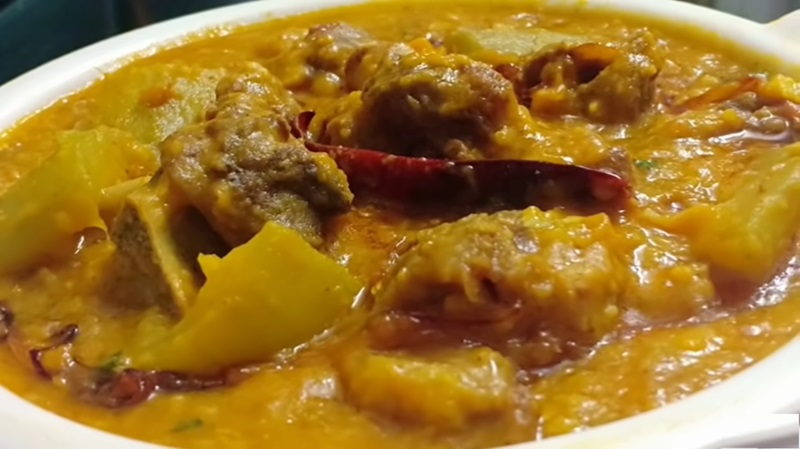
Dalcha, a hearty and flavorful stew, has its origins in the rich culinary landscape of South India, particularly in regions like Hyderabad and Karnataka. The name "Dalcha" is derived from the Urdu word "dal" meaning lentils, and the dish is characterized by its unique combination of meat and lentils. The stew can feature a variety of ingredients, including vegetables or meats such as chicken or mutton, leading to variations like mutton dalcha when mutton is included. The vegetables used in Dalcha can vary, but commonly include brinjal (eggplant), drumsticks, and potatoes. These vegetables add a delicious texture and depth of flavor to the dish. Another essential component of Dalcha is bottle gourd. This flavorful stew is traditionally paired with the rice dish known as bagara khana. The preparation involves cooking lentils and meat or vegetables together, flavored with a blend of aromatic spices such as cumin, coriander, ginger, garlic, and chili. Tamarind or raw mango is often added to lend a tangy twist. The slow-cooking process allows the flavors to meld, resulting in a thick and flavorful stew.
Dalcha is often served with biryani or rice, making it a popular accompaniment in Hyderabadi cuisine. Its rich history and delicious taste have contributed to Dalcha's enduring popularity, transcending its royal origins to become a beloved dish in the diverse culinary tapestry of South India.
Mirchi Ka Salan
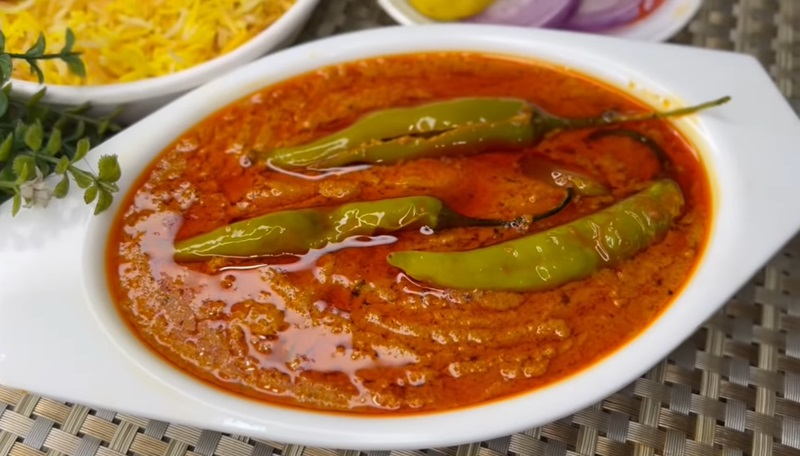
Mirch Ka Salan, a spicy chili curry, traces its origins to the royal kitchens of Hyderabad, India. This flavorful dish is a significant part of Hyderabadi cuisine, showcasing the region's rich culinary heritage. Prepared with green chilies, bay leaf, peanuts, sesame seeds, tamarind, and a blend of aromatic spices, Mirch Ka Salan is known for its complex and well-balanced flavors. The dish offers a perfect balance of heat, tanginess, and nuttiness, making it a favorite accompaniment for biryanis. To prepare Mirch Ka Salan, green chilies are typically slit and cooked in a flavorful gravy made from the roasted and ground mixture of peanuts, sesame seeds, and spices. Tamarind is added to provide a subtle tanginess, elevating the overall taste of the curry.
Mirch Ka Salan is a delicious representation of the royal culinary traditions of Hyderabad, where it has been enjoyed for centuries. Today, it continues to be a beloved dish, appreciated for its bold flavors and its ability to complement various rice dishes, especially biryanis.
Machher Jhol
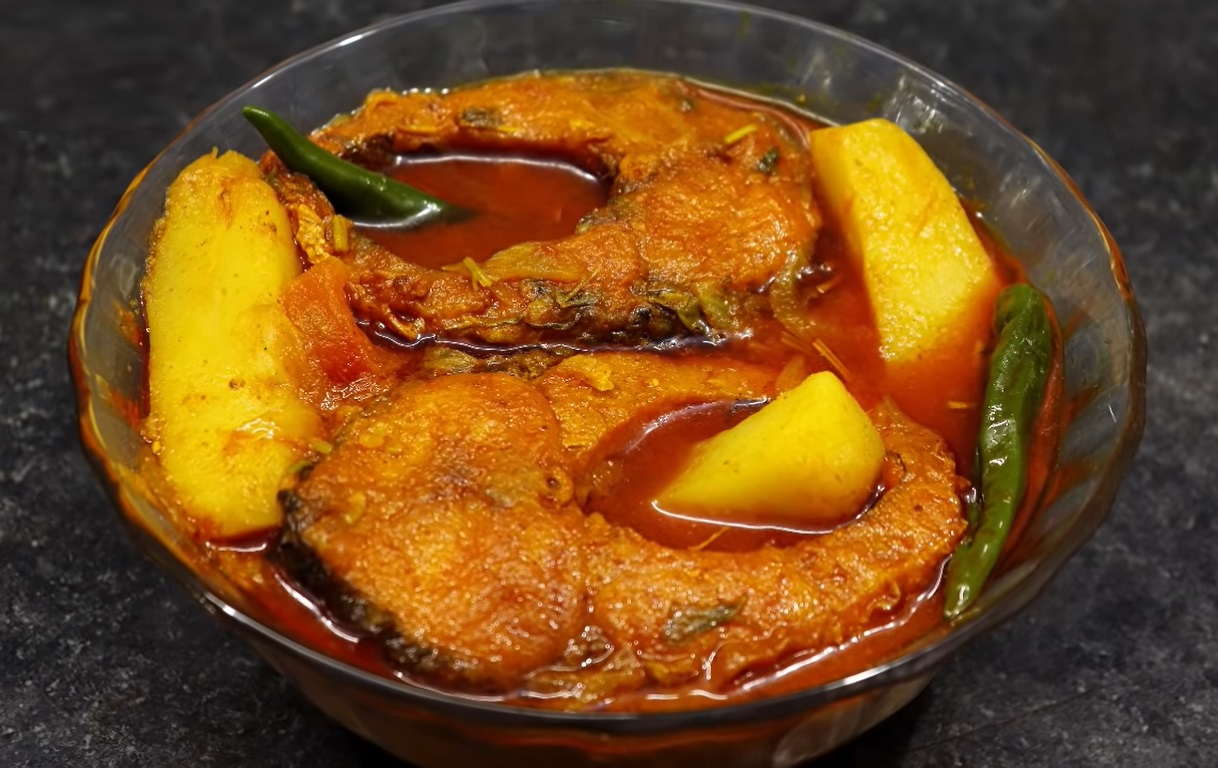
Machher Jhol is a popular Indian fish curry hailing from the Eastern region of India, particularly West Bengal and Bangladesh. This delectable dish showcases the rich culinary heritage and love for seafood in this region. The star ingredient of Machher Jhol is fresh fish, typically Rohu or Katla, which is simmered in a flavorful broth made with a blend of spices. The curry is known for its light and thin consistency, allowing the flavors to penetrate the fish perfectly. The spices used in Machher Jhol vary but often include turmeric, cumin, coriander, ginger, garlic, and green chilies. These spices infuse the curry with a tantalizing aroma and a perfect balance of heat and tanginess. To enhance the taste, vegetables like potatoes or eggplants are often added to the curry, providing a delightful contrast in texture. The dish is typically served with steamed rice, creating a comforting and satisfying meal.
Machher Jhol is not just a dish; it is a representation of the vibrant flavors and cultural diversity that India has to offer. Whether enjoyed in a traditional Bengali household or in a restaurant, this curry is sure to leave your taste buds wanting more.
Tarkari

Tarkari, a flavorful and aromatic dish, is a popular Indian curry that is loved for its rich and diverse flavors. Tarkari is a vegetarian dish that showcases a wide variety of vegetables cooked in a thick and spicy gravy. The base of the Tarkari curry is usually made with a blend of onions, tomatoes, ginger, and garlic, which are sautéed until golden and fragrant. A unique combination of spices such as cumin, coriander, turmeric, and garam masala is added to create a complex and well-balanced flavor profile. The vegetables used in Tarkari can vary depending on the season and personal preferences. Common vegetables include potatoes, cauliflower, peas, carrots, bell peppers, and eggplant. These vegetables are cooked until tender, absorbing the flavors of the spices and creating a satisfying texture. Tarkari is often enjoyed with steamed rice or Indian flatbreads like roti or naan.
It is a versatile dish that can be customized to suit individual tastes, and it can be made mild or spicy according to preference. Tarkari is not only delicious but also nutritious, as it is packed with vitamins, minerals, and fiber from the assortment of vegetables used. Whether enjoyed as a main course or a side dish, Tarkari is a delightful and wholesome addition to any Indian meal.
Kombdi Vade
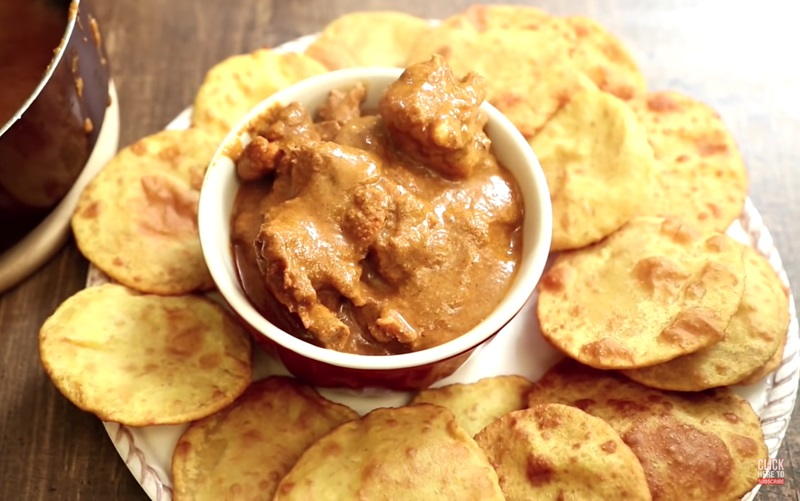
Kombdi Vade stands as a cherished dish from Maharashtra, India, seamlessly combining chicken curry with the delightful crunch of deep-fried bread known as vade. The curry boasts a rich medley of spices, including onions, garlic, ginger, turmeric, coriander, cumin, and red chili powder. Slow-cooked until the chicken reaches a tender perfection, the curry becomes an aromatic masterpiece. Vade, a crispy fried bread crafted from a blend of lentils and spices, provides a satisfying contrast to the flavorful chicken curry. This culinary pairing creates a mouthwatering symphony of textures and tastes.
Often accompanied by onion and lemon slices for a tangy touch, Kombdi Vade is a go-to dish for Maharashtrians during special occasions and festivals. Its unique combination of flavors and textures offers a delightful exploration into the diverse and vibrant realm of Indian cuisine, making it a must-try for those seeking an authentic culinary experience.
Chingri Malai Curry

Chingri Malai Curry, also known as Prawn Malai Curry, is a delectable Indian dish hailing from the coastal regions of West Bengal. This curry showcases the perfect blend of flavors and textures, making it a favorite amongst seafood lovers. The star ingredient of this dish is the succulent prawns, which are cooked in a rich and creamy coconut milk-based gravy. The gravy is infused with a medley of aromatic spices like turmeric, cumin, coriander, and red chili powder, lending a depth of flavor to the curry. The addition of mustard oil and freshly grated coconut further enhances the taste, giving it a unique and tantalizing twist.
The Chingri Malai Curry is known for its velvety texture and delicate balance of flavors. The creamy coconut milk adds a subtle sweetness, which is beautifully complemented by the mild heat from the spices. The prawns absorb the flavors of the curry, resulting in a succulent and indulgent seafood experience. Chingri Malai Curry is typically served with steamed rice or naan bread, allowing you to savor every bit of the flavorful gravy. This dish is a true representation of the rich culinary heritage of India and is sure to leave you craving for more.
Malabar Matthi Curry
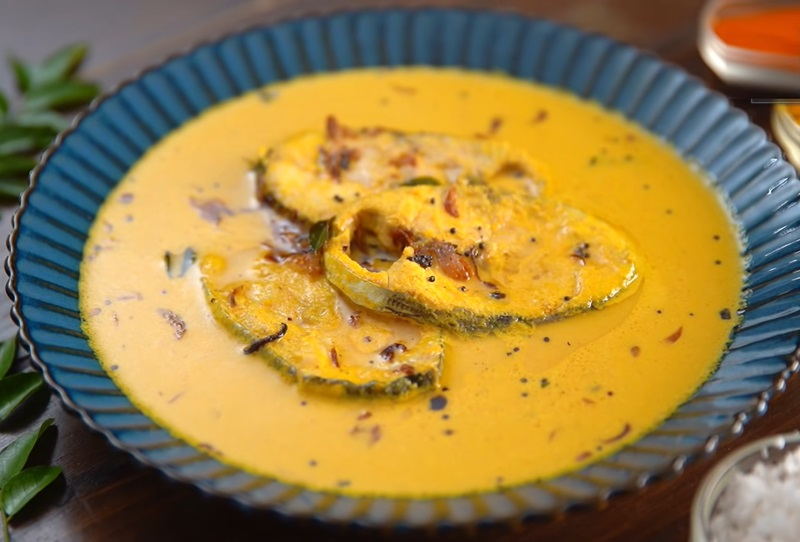
Malabar Matthi Curry is a popular Indian dish hailing from the coastal region of Malabar in Kerala. This delectable curry features small, tender fish known as "matthi" or sardines, cooked in a rich and flavorful gravy. The curry base is prepared by sautéing a blend of aromatic spices like coriander, turmeric, cumin, and red chili powder in oil. To this, onions, ginger, and garlic are added, lending a fragrant aroma to the dish. Tomatoes and coconut milk are then incorporated, adding a creamy texture and enhancing the overall taste. The sardines are marinated in a mixture of spices and then gently simmered in the curry until they are tender and infused with the flavors of the gravy. The final touch to this dish is the addition of aromatic curry leaves, which impart a distinct and refreshing taste.
Malabar Matthi Curry is typically served with steamed rice or appam, a traditional South Indian bread. The combination of tender fish, rich spices, and creamy coconut milk makes this curry a true delight for seafood lovers, showcasing the unique flavors of the Malabar region.
Naan Qalia
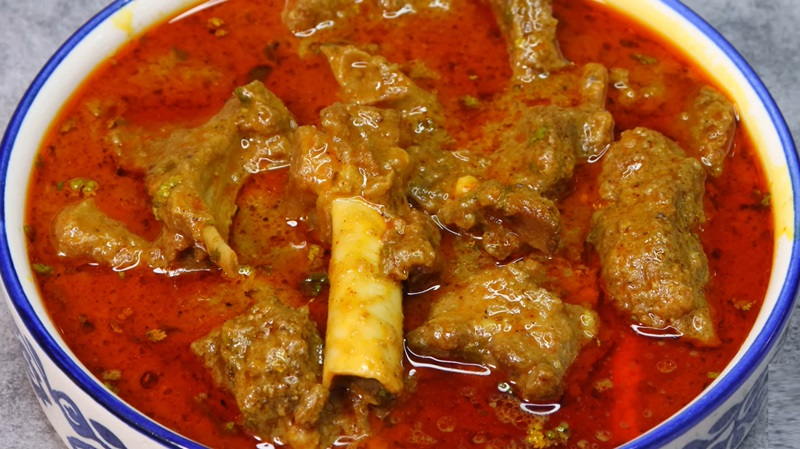
Hailing from Aurangabad, India, Naan Qalia is a delectable fusion of mutton and an array of spices. The term "naan" refers to the bread, typically crafted in a tandoor, a hot furnace, while "qalia" signifies a savory blend of mutton or beef combined with a medley of aromatic spices. The dish is traditionally made with succulent pieces of mutton or lamb that are marinated in a mixture of yogurt, spices, and herbs. It is then slow-cooked in a thick and flavorful gravy, which is made with a blend of onions, tomatoes, ginger, garlic, and a variety of aromatic spices like cinnamon, cardamom, and cloves. The slow cooking process allows the flavors to meld together, resulting in a hearty and flavorful curry. Naan Qalia is typically served with naan, a traditional Indian bread, which is perfect for soaking up the delicious gravy. The combination of tender meat and aromatic spices makes this dish a true delight for the senses.
It is often enjoyed as a special treat during festivals and celebrations, but can also be found in many Indian restaurants around the world. Naan Qalia is a mouthwatering Indian curry dish that showcases the rich culinary heritage and its aromatic flavors and tender meat make it a must-try for any curry lover.
Mangalorean Chicken Sukka

Mangalorean Chicken Sukka, a delectable and fragrant Indian delicacy, originates from the coastal region of Mangalore in Karnataka, South India. This culinary gem, integral to Mangalorean cuisine, is renowned for its opulent blend of spices and flavors. The term "Sukka" is derived from the Hindi word "Sukha," meaning "Dry," and is occasionally known as "Kori Ajadina." This dish presents two preparation variations: a dry version and a semi-gravy consistency.
The foundation of Mangalorean Chicken Sukka lies in a medley of dry-roasted spices, including coriander seeds, cumin, black peppercorns, and red chilies, ground into a fine paste. This paste harmonizes with tender chicken, onions, garlic, ginger, and tomatoes, forming a luscious gravy. What distinguishes Mangalorean Chicken Sukka is the infusion of coconut, imparting a unique sweetness and creaminess. Tamarind juice, curry leaves, and a touch of ghee contribute to the tangy and subtly smoky flavor profile.
Best enjoyed with rice or Indian breads like roti or naan, Mangalorean Chicken Sukka is a testament to coastal spices and culinary finesse. Its captivating combination of heat, spice, and savory richness makes it a cherished choice for those who savor authentic and bold South Indian flavors.
Baghaar-e-Baingan
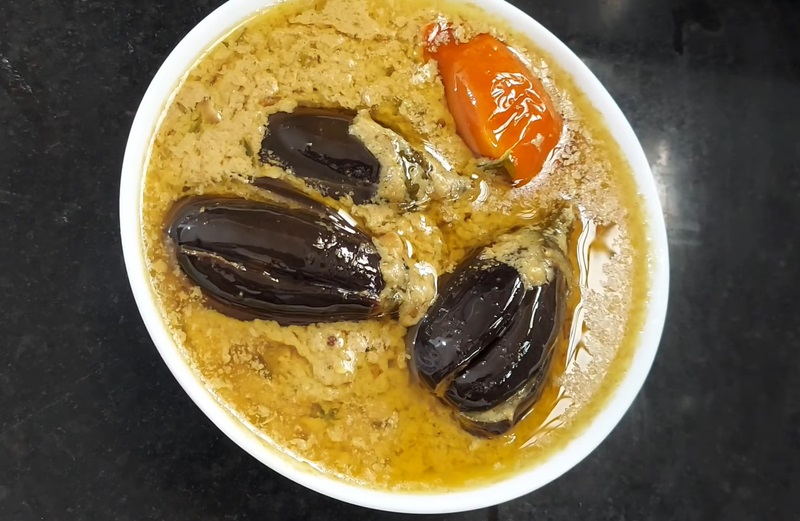
Baghaar-e-baingan is a popular Indian curry dish hailing from the region of Hyderabad. It is a delicious and aromatic preparation made with eggplant (baingan) and a unique tempering technique known as "baghaar." This dish showcases the rich and diverse flavors of Indian cuisine. To prepare Baghaar-e-baingan, the eggplant is first roasted until it becomes soft and tender. Meanwhile, a tempering mixture is prepared by heating ghee (clarified butter) and adding spices like cumin seeds, mustard seeds, fenugreek seeds, and curry leaves. This tempering is then poured over the roasted eggplant, infusing it with a burst of flavors and aromas. The Baghaar-e-baingan curry is typically spiced with a blend of ground spices like turmeric, red chili powder, coriander powder, and garam masala. It is then slow-cooked to allow the flavors to meld together and create a rich and hearty curry. This dish is often enjoyed with steamed rice or Indian breads like roti or naan.
Baghaar-e-baingan is a delightful combination of smoky roasted eggplant, fragrant spices, and a tempering that adds a unique touch to the dish. Its robust flavors and satisfying textures make it a favorite amongst curry lovers and a must-try for anyone looking to explore the vibrant world of Indian cuisine.
Sai Bhaji
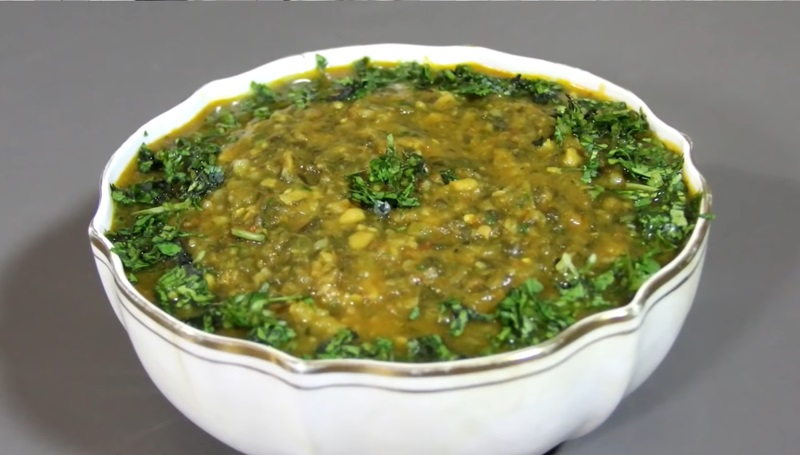
Sai Bhaji stands as a nutritional powerhouse, a delightful creation born from the harmonious fusion of dal (lentils), palak (spinach), and an array of vibrant vegetables. A cornerstone in regional gastronomy, Sai Bhaji exemplifies the culinary artistry of blending various greens into a flavorful medley.
The cooking process involves simmering lentils and vegetables together, resulting in a robust and nutritious dish. Celebrated not just for its delectable taste but also its abundant nutritional value, Sai Bhaji provides a diverse range of vitamins and minerals derived from its varied green components. Its appeal extends beyond the culinary realm; Sai Bhaji is revered as a source of essential nutrients, making it a preferred choice for those who prioritize both flavor and health benefits in their meals.
Santula

Santula is a traditional Indian curry dish that originates from the Eastern Indian state of Odisha. It is a simple yet flavorful vegetable dish that is popular among the locals. Santula is known for its light and healthy preparation, making it a go-to option for those seeking a nutritious meal. The dish primarily consists of a variety of vegetables such as eggplant, pumpkin, potatoes, tomatoes, and beans, all cooked together with minimal spices. The vegetables are typically cut into small pieces and stir-fried in oil or ghee. The addition of mustard seeds, cumin seeds, and curry leaves enhances the aroma and flavor of the dish. Santula is often seasoned with turmeric, salt, and red chili powder, giving it a mild spiciness. It is commonly enjoyed with steamed rice or roti, making it a perfect main course for a complete Indian meal. What sets Santula apart is its simplicity and focus on fresh and seasonal vegetables. It is a versatile dish, allowing for various combinations of vegetables based on personal preference and availability.
Santula is celebrated not only for its delicious taste but also for its health benefits, as it is light on oil and incorporates a spectrum of nutrient-rich vegetables. This Odia culinary gem is an integral part of traditional feasts and daily meals, embodying the essence of simplicity, nutrition, and regional gastronomy that has been cherished for generations in Odisha.
Chingudi Jhola
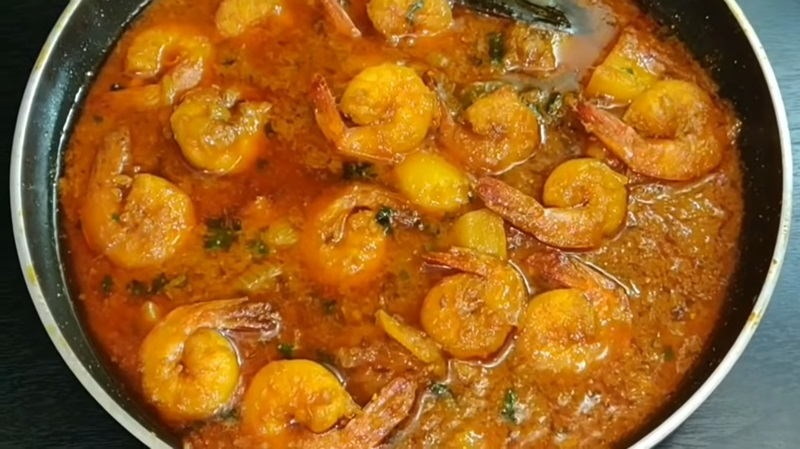
Chingudi Jhola, a savory and spicy prawn curry, finds its roots in the coastal state of Odisha, India. This seafood delicacy is a testament to the region's rich maritime heritage and its love for flavorsome preparations using fresh catch from the Bay of Bengal. To prepare Chingudi Jhola, succulent prawns are marinated with a blend of traditional Odia spices, often including turmeric, red chili powder, cumin, and coriander. The marinated prawns are then cooked in a flavorful curry base made from a medley of ingredients such as tomatoes, onions, garlic, and ginger. Mustard oil, a staple in Odia cuisine, imparts a distinctive aroma and flavor to the curry.The dish is then simmered with tomatoes, tamarind, and coconut milk to enhance the flavors and create a creamy texture.
Served with steamed rice, Chingudi Jhola stands as a culinary highlight in Odia households and coastal communities. The combination of spices and the freshness of the prawns make this dish a delight for seafood lovers, providing a tantalizing blend of flavors that is sure to satisfy the taste buds.
Daab Chingri

Daab Chingri, a culinary gem from the Bengali cuisine, traces its origins to the fertile delta region of West Bengal, India. This exquisite dish is a celebration of the region's love for seafood, specifically prawns, and the ingenious use of coconut. To prepare Daab Chingri, large prawns are marinated with a melange of spices like turmeric, cumin, coriander, and mustard, creating a flavorful blend. The marinated prawns are then stuffed into a green coconut, still in its husk, which serves as a natural cooking vessel. The coconut is sealed with atta (wheat flour) or dough to trap the flavors and juices within. The stuffed coconut is slow-cooked, allowing the prawns to absorb the subtle sweetness of the coconut water and the rich flavors of the spices. The result is a tender and aromatic prawn curry with a unique presentation and taste.
Daab Chingri is not just a culinary delight but also a visual spectacle, often served directly in the coconut husk. The aroma of the spices and the freshness of the prawns make Daab Chingri an absolute delight for seafood lovers. This dish is often served with steamed rice, making it a complete and satisfying meal. This dish is a favorite during festive occasions and celebrations, showcasing the artistry and culinary expertise that Bengal is renowned for.
Koottukari
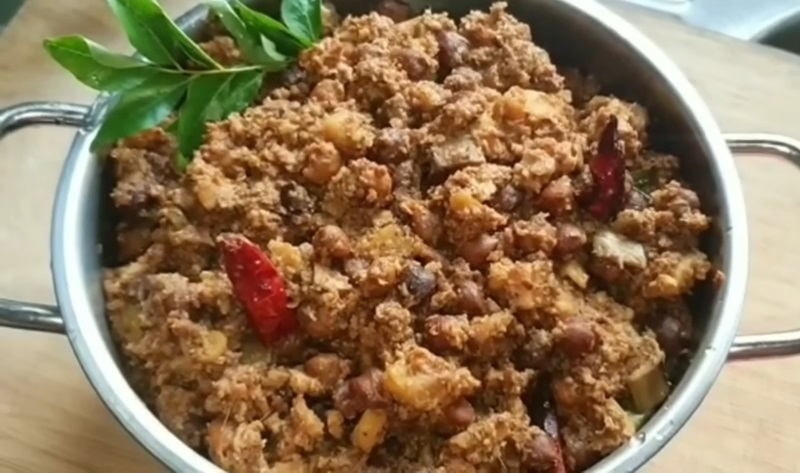
Koottukari is a traditional South Indian curry dish that originates from the state of Kerala. It is a delicious combination of vegetables cooked in a coconut-based gravy, often flavored with a blend of aromatic spices. The dish typically features a medley of vegetables such as pumpkin, beans, yam, and carrots, which are cooked until tender yet retaining their natural flavors. These vegetables are then simmered in a creamy and flavorful coconut gravy made with freshly grated coconut, cumin seeds, turmeric, and green chilies. The addition of curry leaves adds a distinct aroma to the dish.
Koottukari is known for its balance of flavors with a subtle blend of spiciness from the green chilies and the creamy sweetness of the coconut. It is often served as a side dish with steamed rice, but can also be enjoyed with Indian breads like chapati or appam. This vegetarian curry is not only a treat for the taste buds but also a healthy and nutritious option, as it incorporates a variety of vegetables. It showcases the culinary expertise and richness of flavors that are synonymous with Indian cuisine.
Maachha Bihana
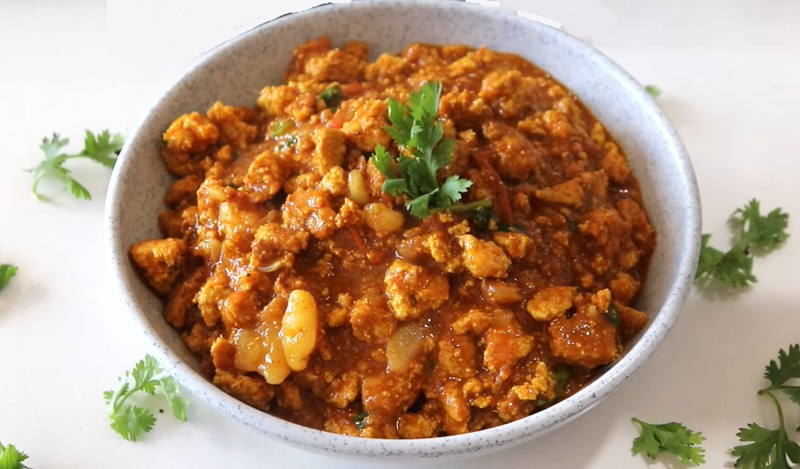
Maachha bihana is a popular seafood dish originating from the coastal regions of India, particularly Odisha. Known for its rich flavors and aromatic spices, this curry is a delight for seafood lovers. The star ingredient of this dish is fresh fish, usually marinated with turmeric and salt before being cooked in a thick, spicy gravy. The curry base is made by sautéing onions, garlic, and ginger in oil until golden brown. Then, a blend of spices such as cumin, coriander, turmeric, and red chili powder is added, infusing the dish with a vibrant color and intense flavor. Fresh tomatoes and coconut milk are also added to create a creamy and luscious texture. Once the curry base is ready, the marinated fish is gently simmered in the gravy until cooked to perfection.
The dish is typically garnished with fresh coriander leaves and served with steamed rice or roti. Maachha bihana curry is known for its complex flavors, combining the earthiness of spices with the natural sweetness of seafood. It is a testament to the diverse and delicious cuisine that India has to offer.
Alu Potala Rasa

Alu Potala Rasa is a delectable and aromatic Indian curry dish that originates from the eastern coastal regions of India. This vegetarian dish is made with a combination of potatoes (aloo) and pointed gourd (potala), cooked in a rich and flavorful gravy (rasa). To prepare this dish, the potatoes and pointed gourd are first sautéed with spices like cumin, turmeric, and red chili powder, which infuse the vegetables with a vibrant flavor. The vegetables are then simmered in a thick and tangy tomato-based gravy, which is enhanced with a medley of spices such as coriander, garam masala, and fenugreek leaves. This combination of spices creates a harmonious blend of flavors that is both savory and slightly spicy.
Alu Potala Rasa is often enjoyed with steamed rice or Indian breads like roti or naan. The creamy texture of the potatoes and the tender bite of the pointed gourd, combined with the aromatic and spicy gravy, make this dish a hearty and satisfying meal. It is loved by both vegetarians and non-vegetarians alike, making it a popular choice in Indian households and restaurants.
Dopiaza

Dopiaza, a savory and aromatic dish, has its origins in Persian and South Asian culinary traditions, with its name literally translating to "two onions" in Persian. This flavorful curry, believed to have been introduced to India during the Mughal era, has evolved into a beloved dish in various regional cuisines.
To prepare Dopiaza, meat, usually lamb or chicken, is slow-cooked with an abundance of onions, creating a luscious and caramelized base. The dish is characterized by a unique two-step incorporation of onions—diced onions are added at the beginning of the cooking process, while another batch of sliced onions is introduced later, adding both sweetness and texture.The aromatic blend of spices, including coriander, cumin, turmeric, and garam masala, contributes to the complex flavor profile of Dopiaza. The slow-cooking method allows the meat to absorb the spices and the richness of the onions, resulting in a tender and flavorful curry.
Dopiaza is versatile, accommodating variations such as vegetable Dopiaza or Paneer Dopiaza for those preferring meatless options. Served with naan or rice, this delectable dish continues to enchant taste buds, offering a culinary journey through the historical and diverse tapestry of Indian and Persian cuisine.


